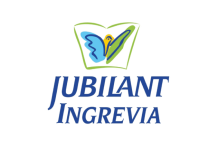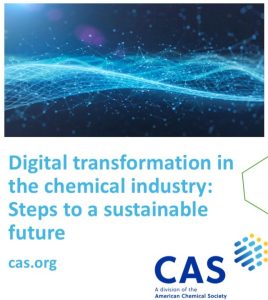Abstract:
The coronavirus disease (COVID-19) pandemic has reinforced the vital importance of resilient water and wastewater infrastructure and services as well as hygiene and behavioural change to protect human health.
In Asia and the Pacific, the development and management of such infrastructure and services faced significant challenges, considering also the need to tackle climate change, recurring disasters, and other crisis events. The COVID-19 crisis may exacerbate the situation even further.
To bring about change, ADB promotes an innovative approach to design, procure, and implement resilient water and wastewater infrastructure and hygiene behavioural change to ensure availability and sustainable management of water and sanitation for all. ADB’s innovative approach applies strategic procurement planning, focusing on operations and maintenance of infrastructure and innovative technologies to deliver reliable services to increasing populations. The strategic procurement planning at the project processing stage assesses procurement risks and supply market capacity. It considers the future performance of water systems, especially how and by whom the infrastructure will be operated and maintained, and its use of climate-friendly and low carbon technologies. This will contribute to developing a resilient infrastructure at an optimal quality and cost, and attracting further a much-needed financing and trust in the water sector.
The coronavirus disease (COVID-19) pandemic has ingrained in people’s minds that resilient water and wastewater infrastructure and services as well as hygiene and behavioural change are critical to protecting human health not only in normal times, but even more so during infectious disease outbreaks.
The people operating water and wastewater utilities have been praised for their efforts during this difficult period. Global Water Intelligence dedicated 25 June to water workers, launching a hashtag to thank them for their engagement during this crisis. All important factors, such as water service providers and utilities workers, development partners, private sector, non-government organizations, and communities mobilized expeditiously and efficiently to ensure continuity of water and wastewater services, and to implement Water Sanitation and Hygiene (WASH) programs to promote population health, welfare and development.
Considering the need of tackling climate change, and recurring disasters and other crisis events, water workers’ activities are becoming more complex, specialized, and modernized. Besides the vital role and continuity of engagement of water workers, technological innovations such as digitization and remote monitoring of assets were seen as critical during the recent pandemic. A study developed by Piers Clark, CEO of Isle Utilities, has highlighted as one of its important conclusions that water utilities need to engage more with remote technology using automation and decision intelligence. In line with this, a 2020 study from Black and Veatch shows that only 20% of utilities surveyed are using digital solutions to effectively implement their activities. In a recent presentation to the Asian Development Bank (ADB), Taqsem Khan, CEO of Dhaka WASA highlighted the importance of digital systems and supervisory control and data acquisition (SCADA) to inspire teams and manage water service continuity and other resources such as smart metering systems, and online bill payment.
Many utilities, which developed business continuity plans to cope with the new normal, are still in crisis mode and in the process of reverting to their usual business costs: the 2020 Black and Veatch study shows that the crisis impact on the water utility business is expected to be at about $17 billion for clean water utilities and $14 billion for drinking water utilities, due to challenges in billing, collection, and operating health risks. While the world is already on the curve to miss Sustainable Development Goal (SDG) 6 targets (to ensure availability and sustainable management of water and sanitation for all), the COVID-19 crisis may exacerbate the diversion further.
On an optimistic note, one of the clear priorities of post-COVID-19 “new normal” will be increased support to utilities to provide everybody with access to water and wastewater services as per SDG-6. Governments may decide to engage even further in promoting and developing resilient water and wastewater infrastructure and associated WASH programs, which require minimal access to water to engage visible and sustainable communities’ behavioural change.
Still, the reliability and sustainability of water and wastewater infrastructure remain a challenge. Resilient infrastructure is designed and developed to address present and future needs and shocks at an optimized cost that includes relevant technology and is adapted to climate change, is operated efficiently with adapted capacities and brings reliable services to people. The question now is how. How can these be developed? How can international institutions such as ADB innovate to design, procure, and implement resilient water and wastewater infrastructure and hygiene behavioural change to put SDG-6 back on track? What should not be missed in the coming crucial years?
To bring about change, ADB is promoting an innovative approach as described below using strategic procurement planning, focusing on operations and maintenance of infrastructure, and introducing technology and innovations to deliver reliable services to increasing populations.
A Challenging Context
The World Health Organization estimated that in 2015, 2.1 billion people worldwide lacked safely managed drinking water, with climate change amplifying every year the frequency and severity of climate impacts on water resources. The latest United Nations report on progress towards the SDGs states: “More efficient use and management of water are critical to addressing the growing demand for water, threats to water security, and the increasing frequency and severity of droughts and floods resulting from climate change.” According to a UNESCAP report, around 260 million people in Asia and the Pacific still don’t have access to a protected source of water. Resources are more constrained. Despite years of efforts from the public sector, private sector, and development partners, lack of efficient and sustainable systems to manage water and wastewater services is a big concern. The governance and organization of the relevant institutions in the water and wastewater sector are still grappling with outdated technical, managerial, and tariff models.
The development and management of water resources, infrastructure, and services in the Asian region have mostly been insufficient, especially in cities which, in most cases, are significantly lagging behind the urbanization. Recently, severe water shortage hit a number of cities, including Cape Town, Chennai, and Manila in 2019, as water resources are depleting while urban water demand is continuously increasing. In many cities in Asia, ever-increasing quantities of water need to be sourced and treated to satisfy growing demand. In many cases, a significant amount of water is lost in non-revenue water (NRW), either through physical leaks due to dilapidated and worn-out pipes or through commercial losses due to lack of customer registration, metering and billing systems. Inefficient water networks often have low or variable pressure that severely impacts the quality of water delivered to customers as wastewater can infiltrate the water network.
Furthermore, such water losses severely impact the energy efficiency of water systems. A 2018 study developed in Georgia by the Cities Development Initiative for Asia (CDIA) demonstrated the strong linkages between the high power costs for a water utility and high NRW. Better leakage control, as well as recommended measures towards proper management, billing, and operations, could result in significant electricity savings. This is so promising that in 2018, ADB has developed the Screening Tool for Energy Evaluation in Projects (STEEP) for water and wastewater systems. This tool has been piloted on several projects, which have identified potential energy savings to over 50%, compared with the energy use of the implemented design.
As for wastewater, the infrastructure situation is even more worrying. While in 2017, 1.2 billion people across Asia and the Pacific lacked access to basic sanitation services, a recent study conducted by Wateraid to understand the sustainability of large wastewater treatment plants after project completion has shown that the resilience of wastewater treatment plants is low: with an average of about $1 billion of yearly official development assistance, more than half of the plants constructed were never commissioned or taken off-line or continually overloaded/underloaded. Commonly, projects were not well adapted to operations and maintenance, and the infrastructure was not properly built, sized, or operated, due to lack of operating staff capacity.
Such lack of effectiveness or poor sustainability makes it more challenging to attract future investments either from the public or private parties, and also raises questions about the way the projects were designed, procured, or operated. The sustainability criteria are closely linked with the procurement modality that defines how the infrastructure projects will be developed, designed, implemented, and managed.
The strategic procurement planning revolution
ADB has developed its long-term Strategy 2030 for achieving a Prosperous, Inclusive, Resilient, and Sustainable Asia and the Pacific, which stresses that efforts to eradicate poverty should focus on delivering services to the population. The infrastructure is not a target by itself but rather it’s capacity to deliver the quality of services to the population in a resilient way.
To support this, ADB in 2017 adopted a new procurement framework that shifts from one-size-fits-all to a fit-for-purpose approach with a greater focus on quality and value for money. The new procurement framework also introduced the Strategic Procurement Planning at project processing stage to assess procurement risks and supply market capacity, develop best options for procurement of goods, works and services, and inform the project design. Such Strategic Procurement Planning is more effective as it facilitates (i) ADB and project owners to better understand and analyze the diversity of technologies available in the market so as to bring innovative and state-of-art approaches, (ii) determine potential players in the market, (iii) propose outreach strategies to disseminate information about projects and make procurement packages attractive for potential players, and (iv) assess the main risks in the bidding process, and propose mitigating measures. This ultimately ensures the selection of quality suppliers and thus better value for money for the projects.
This strategic procurement planning is a big change. It ensures that the overwhelming efforts to initiate, negotiate, conceive, and build infrastructure should focus on the concept design as well as on a realistic assessment that the project design is strategically prepared to procure what the market can provide at an optimal quality and cost, and with a modality adapted to the capacity of the institution developing it.
This fit-for-purpose approach in project design and procurement arrangements is expected to result in improved quality and greater value-for-money, reduced time to deliver procurement outcomes, and higher quality suppliers bidding for projects, with strengthened procurement capacity of developing member countries. The operating environment study should include the borrower’s capacity and capability assessment, as it is a key component of how the operation and maintenance services should be considered during project design and supported during implementation. Then the market analysis provides feedback on the actors potentially interested and eligible to do the works. The country and sector procurement risk assessment analyses the severity of risks and identifies strategic options. The procurement strategy is then selected, including bidding procedures, contracting strategy, and contract management.
In line with the development of resilient infrastructure, the strategic procurement planning answers two key questions: (a) how to ensure at the start of a project that operation and maintenance of the infrastructure facility will continue to deliver its benefits over many years and that its assets last their lifetime; and (b) how to ensure that new technology and innovation, including climate-resilient and green technology, can offer better financial and environmental benefits?
Introducing Operation and Maintenance in Infrastructures Projects
The strategic procurement planning should consider the future performance of water systems, especially how and by whom the infrastructure will be operated and maintained. Most advanced utilities have a comprehensive approach to locate, identify, qualify, and manage infrastructure assets, as well as assess the financial requirements to maintain them at a targeted performance. In Asia, though, this is often not the case.
Many utilities require a systematic way to prepare asset management plans for timely repairs, rehabilitation, or replacement of assets, and to develop an effective strategy for long-term funding of operation and maintenance services. These large infrastructure projects should fully consider operation and maintenance aspects and capacity building from the design stage as this sets the foundation for the sustainability of the infrastructure and the efficiency of the services provided.
Operation and maintenance components can be introduced using different modalities. In standard employer-designed contracts, the design of the infrastructure is done by the employer, the construction by the contractor, and the operations and maintenance by the operating public utility. Procurement modalities request for works only with detailed design included in the bidding document, and operations and maintenance may be introduced for the first few years, as in the West Bengal Water supply project, the Rajasthan Water Supply Project, or Madhya Pradesh Water Supply Project.
Generally, while the employer controls the design, this procurement modality may limit innovation and increase project life cycle cost, as there are limited incentives to reduce capital costs or operating costs. For instance, if the cost of the chemicals and energy are not the ones planned, the employer will bear it. There are limited incentives for designers to ease the operations phase or to limit maintenance and asset replacement that will usually appear a few years after the operation starts. Also, in the case of non-performance of the infrastructure, the parties may blame each-others without easy solutions, and it may increase costs and time. If the public utility does not have the capacity to operate the infrastructure, this procurement mechanism is including a limited knowledge transfer to develop its operating staff, for instance, to operate a water or wastewater treatment plants using more complex technology.
In design and build contracts, the design and the construction phases are handled by the same contractor, and the operations and maintenance is done by the operating public utility. The selection process is simplified and the responsibility is concentrated on the same company undertaking the design and construction responsibilities.
The design-build construction company will have incentives to use innovative design, to achieve lower construction costs and faster delivery as they handle both. On the other hand, the employer may lose some control over the design process, and the cost incentives may negatively impact infrastructure quality. This form of contract may reduce competition as there are less number of eligible companies combining capacity to lead both phases. Also, there is still potential for conflicts with the operating utility. The capacity-building mechanism of the utility is limited and the operating phase may start late, or improperly as unskilled staff will impact the efficiency and durability of a water or wastewater treatment plant.
Recently, pure design-build-operate (DBO) contracts have been used for implementing infrastructure projects while improving resilience: employer defines outputs specifications related to what the infrastructure is supposed to deliver to people, as stable and high-level quality of water and wastewater.
DBO contracts request for design and works to be associated with defined operation and maintenance targets in their contracts, including energy, water efficiency, or wastewater quality targets to which payments to contractors are linked. If the targets are not met, contractors will have less revenue during the operating phase, which is a good incentive for them to deliver a high-quality infrastructure during the design phase. The contractor may submit innovative technology, as a bidder is selected based on the lowest life cycle cost, including the operating costs as energy, chemicals, and capital costs as assets replacement. The contractor is directly interested in infrastructure resilience as it needs to last for ten years or more. For instance, DBO modality was used in the Sri Lanka Desalination project and the Dhaka Wasa Water treatment plant and is now being adopted in Kiribas to develop a new desalination plant.
DBO requires a strong control from operating utility on the contractor to perform as planned, and has a more complex contract management phase as it is on a longer period with different and variable parameters. The employer needs also to secure the necessary funding to cover contractor operating fees on the period. The operating utility should be involved and interested in the performance of the infrastructure. Experienced operators should be in charge of the preparation of bidding documents to prepare realistic and achievable targets, on which contractor can act. Other forms of contracts to introduce operations and maintenance phases may be developed in the near future, especially to promote further innovations from the private sector to better manage assets and investments.
Introducing Technology and Innovations in Infrastructures Projects
Innovation hubs are now at the centre of attention of development institutions to attract the best ideas available on the market to be used in development projects. These innovations include climate-resilient and low carbon technologies to be used in building infrastructure facilities.
Climate-resilient and low carbon technologies may be using big data and smart systems to better manage water resources with higher accuracy and reliability. They range from traditional SCADA to more sophisticated smart systems using big data collected from many sensors and machine learning algorithms to efficiently manage networks and plants. Smart systems help improve asset performance by integrating geographic information and mapping systems with asset and customer management systems, including smart water meters to provide valuable data about the amount of water supplied to and used by customers.
In Dhaka, ADB has supported water network monitoring using SCADA, which allowed better control and improved water efficiency in district metering areas (DMAs) and reduced NRW. In the People’s Republic of China, ADB is financing the Jilin Yanji Low Carbon Climate Resilient Healthy City Project, which will include smart water meters. Consumption patterns of households will be analyzed to detect abnormal patterns of water consumption that may be related to personal emergencies like illness or accidents and will send an alert to the water utility. In line with this, recent results on COVID-19 analysis on wastewater samples have shown an interest in the use of wastewater systems as community health monitoring systems, since the tracing of the virus has been demonstrated to be useful to understand epidemic evolution and as an early warning system.
Climate-resilient and low carbon technologies can also be included in green and climate-resilient infrastructure involving nature-based design, to ensure the sustainability of infrastructure due to its better alignment with future climate events and greater use of greener materials reducing the impact of extreme water events, such as floods and typhoons. The Jilin Yanji Low Carbon Climate Resilient Healthy City Project includes climate-resilient flood risk management and sponge city green infrastructure – in residential areas within the catchment. Water quality will be improved through the construction of sedimentation tanks and sand filters at the end of drainage pipes, and ecological river rehabilitation.
In cities, recent epidemic events have also raised further the interest of making the city environment, the city assets, and the people connected. More sustainable infrastructures will be enhanced with the use of big data coming from sensors (e.g., pressure, flow, pH, chlorine, etc.) and the outputs derived from such data: better network efficiency, better water quality from plant to customers, and more focused investments using artificial intelligence to identify priority areas to rehabilitate in water networks, real-time follow up of energy consumption.
But using and benefiting from these data systems is not possible without a well-prepared procurement phase, and well-designed operation and maintenance requirements.
We must learn from the past and from the water and wastewater infrastructure operators: as schematized in Chart below, a resilient infrastructure should include from the start the requirements of the people operating it, including the most adapted and climate-friendly technologies, so efficient services can be delivered to end-users. Improving the resilience of water and wastewater infrastructure is also key to attract financing and trust in a sector that has to some extent a poor reputation due to its limited efficiency and financial sustainability.
Chart: Proposed approach to develop a resilient water and waste water infrastructure in Asia and the Pacific

ADB STANDARD DISCLAIMERS:
The views expressed in this publication are those of the authors and do not necessarily reflect the views and policies of the Asian Development Bank (ADB) or its Board of Governors or the governments they represent.
ADB does not guarantee the accuracy of the data included in this publication and accepts no responsibility for any consequence of its use. The mention of specific companies or products of manufacturers does not imply that they are endorsed or recommended by ADB in preference to others of a similar nature that are not mentioned.
By making any designation of or reference to a particular territory or geographic area, or by using the term “country” in this document, ADB does not intend to make any judgments as to the legal or another status of any territory or area.
Author Details: –
 Stephane Bessadi strategically supports infrastructure projects design and procurement in East Asia, Southeast Asia, and the Pacific, focusing on resilience, operations, and maintenance and low carbon technologies as a part of ADB’s Procurement, Portfolio, and Financial Management Department (PPFD). Stéphane also leads to innovative water and wastewater practices and technologies from the water service industry. Stéphane holds Masters Degree in Water Management from AgroParisTech and Engineer Economist Degree from Magistère Ingénieur Economiste of Aix Marseille II University, both in France, and a Bachelor Degree in Economics from McGill University, Montreal, Canada.
Stephane Bessadi strategically supports infrastructure projects design and procurement in East Asia, Southeast Asia, and the Pacific, focusing on resilience, operations, and maintenance and low carbon technologies as a part of ADB’s Procurement, Portfolio, and Financial Management Department (PPFD). Stéphane also leads to innovative water and wastewater practices and technologies from the water service industry. Stéphane holds Masters Degree in Water Management from AgroParisTech and Engineer Economist Degree from Magistère Ingénieur Economiste of Aix Marseille II University, both in France, and a Bachelor Degree in Economics from McGill University, Montreal, Canada.
































